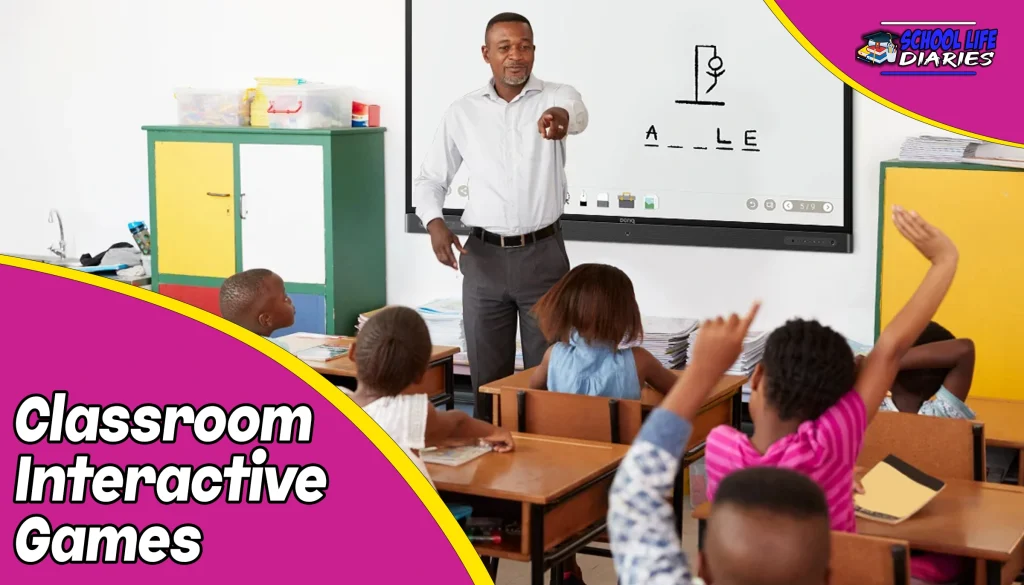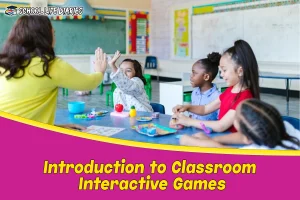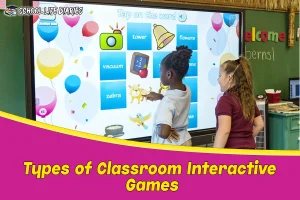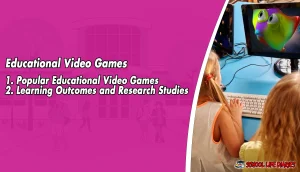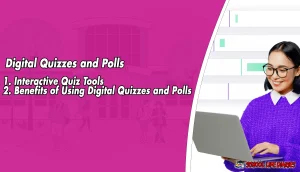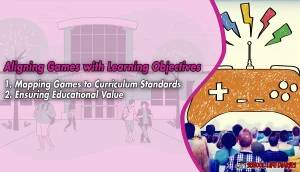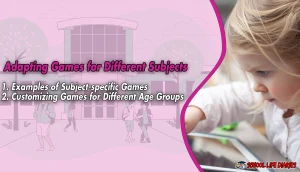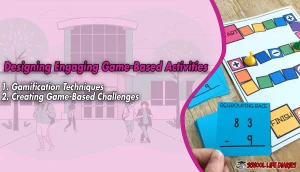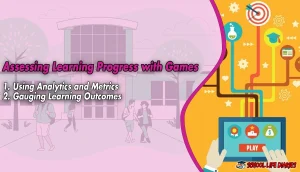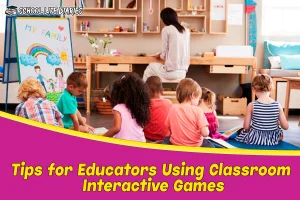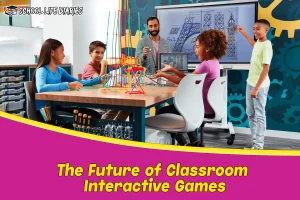Classroom interactive games have emerged as a transformative tool in the field of education, revolutionizing traditional teaching methods and engaging students in an immersive learning experience. These games incorporate technology, interactivity, and collaboration to create a dynamic classroom environment that fosters active participation and enhances critical thinking skills. Students are no longer passive recipients of information but become active participants in their own education. This shift from a traditional teacher-centered approach to a student-centered one instills a sense of freedom within learners, as they are encouraged to think outside the box and explore different possibilities.
Introduction to Classroom Interactive Games
Classroom interactive games refer to educational activities that integrate technology and gaming elements into the learning process. These games are important as they enhance student engagement and motivation, making learning more enjoyable and effective. The use of interactive games in the classroom provides several advantages such as promoting active participation, fostering critical thinking skills, and facilitating collaborative learning among students.
Definition and Importance
Education is significantly enhanced by the implementation of classroom interactive games, as they provide a dynamic and engaging learning environment. The definition of classroom interactive games refers to the use of technology or physical activities that encourage students to actively participate in their own learning process. These games can take various forms, such as online quizzes, educational apps, virtual reality simulations, or even traditional board games with an educational twist. By incorporating elements of fun and competition into the learning experience, these games capture students’ attention and motivate them to actively engage with the content being taught.
The benefits of using classroom interactive games are manifold. Overall, the impact of implementing classroom interactive games is significant in transforming education. By providing an engaging learning environment where students can actively participate in their own education journey without feeling constrained by rigid structures or passive role-playing, these games foster a sense of freedom within the educational setting.
Advantages of Using Interactive Games in the Classroom
The utilization of interactive games in educational settings brings forth numerous advantages that ignite a sense of excitement and enthusiasm among students. One of the main advantages is the impact it has on student learning. Interactive games provide a dynamic and engaging learning environment that captivates students’ attention and encourages active participation. These games allow students to apply their knowledge in a practical manner, solving problems, making decisions, and experiencing real-life scenarios. This hands-on approach not only enhances comprehension but also promotes critical thinking and problem-solving skills.
Incorporating interactive games into the classroom setting can have numerous advantages for both teachers and students alike. By creating an exciting learning environment that fosters active participation, these games enhance student learning outcomes while promoting critical thinking skills. The use of digital quizzes and polls further amplifies these benefits by providing personalized assessment options and encouraging classroom engagement through data collection activities like polls.
Impact on Student Learning and Engagement
One notable impact of incorporating interactive games into educational settings is the profound transformation it brings to student engagement and learning outcomes. Interactive games have the ability to captivate students’ attention and make learning more enjoyable and interactive. When students are actively engaged in a game-based learning environment, they become more motivated to participate and invest their time and effort into the learning process. This increased motivation translates into improved learning outcomes as students are more likely to retain information and apply it in real-life situations.
These strategies not only provide educators with valuable insights into students’ understanding of concepts but also allow for immediate feedback and personalized instruction. Through game-based assessments, teachers can identify areas where students may be struggling or excelling, enabling them to tailor their instruction accordingly. This formative assessment approach promotes a deeper understanding of the material by encouraging students to think critically, problem-solve, and apply knowledge within a gaming context.
Overall, integrating interactive games into educational settings has proven to have a positive impact on student motivation, learning outcomes, and engagement. By leveraging game-based assessment strategies and incorporating gamification principles into remote learning environments, educators can foster an environment that promotes active participation, critical thinking skills development, and ultimately enhances student achievement.
Types of Classroom Interactive Games
This paragraph introduces a discussion on the types of classroom interactive games. Specifically, it focuses on gamified learning platforms, educational video games, and digital quizzes and polls. Gamified-learning platforms refer to online platforms that incorporate game elements into the learning experience to engage students and enhance their motivation.
Gamified Learning Platforms
Gamified Learning Platforms refer to digital platforms that incorporate game elements into educational settings to enhance student engagement and motivation. Examples of Gamified Learning Platforms include Classcraft, Kahoot, and Quizlet Live, which provide interactive games that make learning more enjoyable for students. These platforms offer a variety of benefits and features such as personalized feedback, progress tracking, and collaborative learning opportunities, which contribute to improved academic performance and increased student participation in the classroom.
1. Examples of Gamified Learning Platforms
Several gamified learning platforms have been developed to enhance classroom instruction, such as Classcraft, Kahoot!, and Quizizz. These platforms offer various benefits for students, including increased engagement, motivation, and participation in the learning process. By incorporating game elements such as points, levels, and leaderboards into educational activities, students are more likely to feel a sense of achievement and progress. Furthermore, these platforms provide opportunities for personalized learning experiences through adaptive features that adjust difficulty levels based on individual performance.
Research studies have shown positive outcomes when using gamified learning platforms in the classroom, with improved academic performance and higher retention rates among students. For instance, a study conducted by Sailer et al. (2017) found that using Kahoot! resulted in higher test scores and increased student enjoyment compared to traditional methods of instruction.
2. Benefits and Features
Gamified learning platforms offer a range of benefits and features that can enhance the educational experience for students, fostering increased engagement, motivation, and personalized learning opportunities.
One significant benefit is the effectiveness of interactive games in promoting active learning. These platforms utilize game mechanics such as points, badges, and leaderboards to create a sense of competition and achievement, which motivates students to actively participate in their own learning process. Research has shown that when students are engaged in interactive games, they are more likely to retain information and develop a deeper understanding of the subject matter.
Educational Video Games
This paragraph will discuss popular educational video games and their learning outcomes as well as research studies conducted on them. Popular educational video games have gained significant attention in recent years due to their potential to engage students in interactive and immersive learning experiences. These games aim to incorporate educational content into enjoyable gameplay, providing a unique platform for students to apply and enhance their knowledge and skills.
1. Popular Educational Video Games
Popular educational video games have become a prevalent tool in transforming learning experiences within classrooms. These games offer numerous benefits to students, including increased engagement, improved problem-solving skills, and enhanced critical thinking abilities. Research on game-based learning has shown that incorporating educational video games into the curriculum can lead to better academic performance and a deeper understanding of complex concepts.
Overall, the use of popular educational video games in the classroom is a promising approach that not only enhances students’ learning outcomes but also makes education more enjoyable and engaging for learners.
2. Learning Outcomes and Research Studies
In examining the popular educational video games discussed previously, it is important to consider the learning outcomes and research studies that have been conducted in this field. These studies aim to assess the effectiveness of these interactive games in enhancing student engagement and improving educational outcomes. Research has shown that well-designed educational video games can have a positive impact on student learning, as they provide an immersive and interactive environment that promotes active participation and problem-solving skills.
Digital Quizzes and Polls
This paragraph introduces the discussion on digital quizzes and polls, focusing on two key points: interactive quiz tools and the benefits of using digital quizzes and polls. Interactive quiz tools allow for engaging and interactive assessments in educational settings. Additionally, using digital quizzes and polls has several benefits, such as promoting active learning, providing immediate feedback to students, and enhancing student engagement in the classroom.
1. Interactive Quiz Tools
One notable tool for enhancing classroom engagement and assessment is the utilization of interactive quiz platforms. These platforms employ gamification techniques, which leverage game-like elements to make learning more enjoyable and engaging for students. By incorporating features such as leaderboards, badges, and rewards, interactive quiz tools create a sense of competition and achievement that motivates students to actively participate in their learning. Moreover, these tools offer educational benefits by providing immediate feedback on student responses, allowing teachers to gauge understanding in real-time and adjust instruction accordingly.
This instant feedback also helps students identify areas where they may need additional support or review. The interactive nature of these quizzes promotes active learning and encourages critical thinking as students are challenged to apply their knowledge in a dynamic setting.
2. Benefits of Using Digital Quizzes and Polls
Utilizing digital quizzes and polls offers a myriad of advantages, fostering an immersive learning environment that captivates students and sparks their curiosity. One of the key benefits of digital quizzes and polls is improved student engagement. By incorporating interactive elements into the learning process, students are more likely to actively participate and stay focused on the material being presented. Furthermore, these tools offer personalized feedback, which is crucial for individualized learning experiences. Students receive immediate feedback on their performance, enabling them to track their progress and make necessary improvements.
Integrating Interactive Games into the Curriculum
This discussion will focus on the integration of interactive games into the curriculum, specifically addressing two key points: aligning games with learning objectives and adapting games for different subjects. Aligning games with learning objectives ensures that the educational goals are met through gameplay, enhancing student engagement and motivation.
Aligning Games with Learning Objectives
This discussion focuses on the importance of aligning games with learning objectives in the classroom. One key point is mapping games to curriculum standards, which ensures that the games are relevant and contribute to students’ overall academic progress. Another important aspect is ensuring educational value in games, meaning that they provide meaningful opportunities for learning and skill development.
1. Mapping Games to Curriculum Standards
Mapping games to curriculum standards provides a systematic approach for integrating interactive learning activities into the classroom, ensuring alignment with educational objectives and promoting student engagement. By mapping games to curriculum standards, educators can ensure that the interactive games used in the classroom are directly related to what students need to learn. This helps bridge the gap between traditional teaching methods and modern technology, allowing for a more dynamic and engaging learning experience.
Integrating interactive games into the curriculum offers numerous benefits, including increased motivation and enjoyment for students, improved retention of information, and enhanced critical thinking skills. These games provide an opportunity for students to actively participate in their learning process while reinforcing key concepts and skills.
2. Ensuring Educational Value
To ensure the educational value of integrating technology into education, educators must carefully select and evaluate interactive learning activities that align with curriculum standards. By doing so, they can promote student engagement and enhance learning outcomes. Interactive games have the potential to captivate students’ attention and make learning more enjoyable. However, it is crucial to ensure that these games are not just entertaining but also academically rigorous. They should be designed in a way that promotes critical thinking, problem-solving skills, and content mastery.
Adapting Games for Different Subjects
This discussion will explore two key points related to adapting games for different subjects: examples of subject-specific games and customizing games for different age groups. Subject-specific games refer to educational games that are designed specifically for a particular subject area, such as mathematics or science. These games are tailored to reinforce the learning objectives and concepts of that specific subject.
1. Examples of Subject-specific Games
Subject-specific games provide students with opportunities to engage in interactive learning experiences that are tailored to their specific academic subjects. These games serve as powerful tools for educators to enhance student engagement and facilitate active learning.
These subject-specific games not only make learning enjoyable but also foster the development of critical thinking, problem-solving skills, and subject knowledge.
2. Customizing Games for Different Age Groups
Customizing games for different age groups allows educators to tailor the learning experience to meet the developmental needs and cognitive abilities of students at various stages of their academic journey. By setting age-appropriate limits and selecting game-based learning tools that align with the specific skills and knowledge targeted for each age group, educators can create an engaging and effective learning environment.
For younger children, games can focus on basic concepts such as colors, shapes, and numbers, while also incorporating interactive elements to enhance their motor skills development. As students progress into middle school and high school, games can become more complex and challenging, addressing subject-specific content in a way that is both educational and entertaining.
Creating Effective Interactive Game-Based Lessons
This paragraph discusses the subtopic of creating effective interactive game-based lessons, focusing on two key points: designing engaging game-based activities and assessing learning progress with games. Designing engaging game-based activities involves creating activities that are captivating and promote active participation from students.
Designing Engaging Game-Based Activities
This discussion will focus on the subtopic of designing engaging game-based activities. Specifically, we will be exploring gamification techniques and creating game-based challenges.
Gamification techniques refer to the incorporation of game elements in non-game contexts to enhance engagement and motivation. Creating game-based challenges involves designing tasks or problems that are interactive, competitive, and goal-oriented. This is done in order to promote active learning and problem-solving skills.
1. Gamification Techniques
Gamification techniques have been employed in classrooms to enhance student engagement and motivation through the use of interactive games. These gamification strategies aim to create an immersive learning environment where students are motivated to actively participate and learn. By incorporating elements such as leaderboards, badges, rewards, and leveling up, interactive learning becomes more appealing to students, fostering a sense of competition and achievement. This approach taps into the innate desire for freedom by providing students with autonomy in their learning process.
2. Creating Game-Based Challenges
To create game-based challenges, educators can design tasks that require problem-solving skills and critical thinking, encouraging students to engage actively in the learning process. By designing engaging activities, such as puzzles or quests, teachers can foster a sense of excitement and curiosity among their students. These challenges should be carefully crafted to strike a balance between being challenging enough to promote growth and development while also being achievable for students at various skill levels.
Assessing Learning Progress with Games
This discussion will focus on two key points related to assessing learning progress with games.
This approach not only provides immediate feedback to students but also encourages active participation in the learning process.
1. Using Analytics and Metrics
Utilizing analytics and metrics allows educators to gain valuable insights into student performance and engagement in classroom interactive games. By analyzing data such as time spent playing, success rates, and patterns of behavior, teachers can assess learning progress and identify areas where students may be struggling or excelling. This information can help educators tailor their instruction to meet the specific needs of each student, ensuring a more personalized learning experience.
2. Gauging Learning Outcomes
In order to effectively gauge student progress and measure learning outcomes, it is essential to assess student performance. Classroom interactive games provide a valuable tool for achieving this goal. By incorporating analytics and metrics into these games, educators can collect data on student engagement, participation, and understanding of the material.
This data allows teachers to identify areas where students may be struggling and tailor their instruction accordingly. Additionally, gauging learning outcomes through interactive games allows for real-time feedback that can be used to adjust teaching strategies or provide additional support as needed.
Addressing Challenges in Using Classroom Interactive Games
This discussion will focus on addressing challenges in using classroom interactive games.
Specifically, managing screen time and distractions, overcoming technological barriers, and encouraging inclusivity in game-based learning. Teachers often face the challenge of balancing students’ engagement with interactive games while ensuring that screen time is managed effectively and distractions are minimized.
Managing Screen Time and Distractions
To effectively enhance the learning experience, it is crucial to implement strategies for mitigating screen time and minimizing distractions in the classroom setting. Managing distractions in classrooms is a challenge that educators face when incorporating interactive games into their lessons. While these games have numerous benefits, such as increased student engagement and motivation, they also introduce potential distractions that can hinder the learning process. Therefore, teachers need to find ways to strike a balance between utilizing these games effectively and ensuring that students remain focused on the educational content.
One way to manage screen time and minimize distractions is by setting clear guidelines and expectations regarding the use of interactive games in the classroom. Teachers can establish specific time limits for game usage during lessons and communicate these rules to students beforehand. By doing so, students will understand that while interactive games are valuable tools for learning, they should be used within certain boundaries.
Managing screen time and minimizing distractions are essential aspects of incorporating interactive games into classroom settings successfully. By establishing clear guidelines and expectations regarding game usage, providing breaks for reflection, giving explicit instructions on navigating through games, and promoting collaboration among students during gameplay sessions, teachers can mitigate potential distractions while maximizing student engagement with these educational tools. Through effective management of screen time and distractions, educators can harness the benefits of interactive games and transform the learning experience for their students.
Overcoming Technological Barriers
One important aspect to address in the implementation of technology in education is overcoming technological barriers. As schools increasingly adopt technology for educational purposes, it is crucial to acknowledge and tackle the challenges that may arise. These challenges include issues such as limited access to devices or reliable internet connectivity, lack of technical skills among teachers and students, and compatibility issues with existing infrastructure. Overcoming these barriers requires a concerted effort from all stakeholders involved in education, including policymakers, school administrators, teachers, parents, and students themselves.
To overcome technological barriers, schools must first assess their specific challenges and devise tailored solutions. This could involve investing in resources like tablets or laptops for students who do not have access to them at home. Collaborating with local communities or organizations can also be beneficial in providing internet connectivity to areas with limited access.
Overcoming technological barriers is essential for the successful implementation of technology in education. By actively addressing these challenges through targeted solutions such as providing necessary resources, enhancing digital literacy skills, and seeking collaborations where needed; schools can pave the way for a more inclusive and effective use of technology in the classroom.
Encouraging Inclusivity in Game-Based Learning
Encouraging inclusivity in game-based learning necessitates the creation of an inclusive educational environment where diverse students can actively engage and benefit from the interactive nature of gaming. Promoting inclusivity involves ensuring that all students, regardless of their background or abilities, have equal opportunities to participate and succeed in game-based learning activities.
This can be achieved by incorporating diverse representation within the games themselves, such as characters from different cultures or with disabilities, which allows students to see themselves reflected in the virtual world. By doing so, students feel a sense of belonging and are more likely to engage with the material. This can be done through multiplayer games or group projects that require students to work together to solve problems or complete tasks. By fostering collaboration, game-based learning not only promotes inclusivity but also prepares students for real-world situations where teamwork is essential.
Promoting inclusivity in game-based learning involves creating an inclusive educational environment that fosters collaboration among diverse students. By incorporating diverse representation within games and providing opportunities for collaboration, educators can ensure that all students feel valued and included in the interactive nature of gaming. This approach not only enhances student engagement but also prepares them for future success by developing important social and problem-solving skills.
Ethical Considerations in Game-Based Learning
This paragraph will discuss the ethical considerations in game-based learning, focusing on two key points: addressing potential addiction to games and balancing game time with traditional teaching methods. It is important to consider the potentially addictive nature of games and take steps to address this issue, such as setting limits on gameplay or providing alternative activities.
Addressing Potential Addiction to Games
Addressing the potential addiction to classroom interactive games requires implementing strategies that promote a balanced approach to gaming and prioritize student well-being.
While game-based learning can be highly engaging and effective, it is important to acknowledge the potential risks of excessive screen time and addictive behaviors associated with gaming.
To address these concerns, educators should establish clear guidelines for managing screen time during gameplay sessions. This could include setting specific time limits for gaming activities or incorporating regular breaks to encourage physical activity or social interaction.
They should also provide opportunities for reflection on the ethical implications of gameplay, such as discussing the consequences of in-game actions or exploring real-world connections.
By addressing potential addiction to games through proactive management of screen time and thoughtful consideration of ethical factors, educators can create a healthy balance between engagement and well-being in game-based learning environments.
Balancing Game Time with Traditional Teaching Methods
Balancing the use of game-based learning with traditional teaching methods involves integrating a variety of instructional strategies to accommodate different learning styles and promote a comprehensive educational experience. While interactive games can be highly engaging for students, it is important to strike a balance between game time and other teaching methods to ensure that students are exposed to a range of learning opportunities.
One way to achieve this balance is by incorporating game-based activities as part of a larger lesson plan. Teachers can introduce game-based learning in conjunction with traditional teaching methods such as lectures, discussions, and hands-on activities. This allows students to engage with the material through different modalities and helps cater to their individual learning preferences. By incorporating both games and traditional teaching methods, educators can create an inclusive classroom environment that promotes active student participation and fosters a deeper understanding of the subject matter.
Balancing the use of game-based learning with traditional teaching methods requires careful consideration of instructional strategies that cater to diverse learning styles. By integrating interactive games within larger lesson plans and involving parents in monitoring screen time, educators can create an engaging educational experience that encompasses both technological advancements and conventional pedagogical practices.
Tips for Educators Using Classroom Interactive Games
This discussion will focus on two key points for educators using classroom interactive games: training and professional development, and collaboration and sharing best practices. Training and professional development are essential for educators to effectively integrate game-based learning into their classrooms. Collaborating with other educators allows for the exchange of ideas and sharing of best practices, which can enhance the implementation of game-based learning strategies.
Training and Professional Development
Training and professional development play a crucial role in transforming learning with classroom interactive games. Educators need to be equipped with the necessary skills and knowledge to effectively integrate these games into their instructional strategies. By providing educators with training, they can learn about the different types of interactive games available, how to effectively use them in the classroom, and how to assess their effectiveness in promoting student learning.
This training also allows educators to stay up-to-date with advancements in technology and instructional strategies, ensuring that they are able to create engaging and effective learning experiences for their students. Professional development opportunities not only enhance an educator’s ability to effectively use classroom interactive games but also contribute to their overall professional growth. Through attending workshops, conferences, or online courses focused on using interactive games in the classroom, educators have the opportunity to collaborate with other professionals and exchange ideas on best practices. They can share success stories, challenges faced, and innovative ways of incorporating interactive games into various subject areas.
Training and professional development are essential components in transforming learning with classroom interactive games. These opportunities enable educators to enhance their skills in utilizing instructional strategies involving interactive games while promoting continuous professional growth. By staying current with technological advancements and sharing best practices within their professional network, teachers can create engaging learning experiences that empower students and promote academic success.
Collaboration and Sharing Best Practices
Collaborative efforts and the exchange of best practices among educators are pivotal in fostering the effective integration of interactive learning tools. In the context of classroom interactive games, collaborative learning allows educators to share strategies and insights on how to effectively utilize these tools to enhance student engagement and learning outcomes.
By working together, teachers can pool their knowledge and experiences, allowing for a more comprehensive understanding of how best to implement these games in the classroom.
One key benefit of collaboration is the sharing of strategies. Educators can discuss their experiences with different interactive learning tools, sharing what has worked well for them and what challenges they have encountered. This sharing of knowledge enables teachers to learn from one another’s successes and failures, allowing for a more efficient implementation process.
Collaborative efforts and the sharing of best practices play a crucial role in transforming learning with classroom interactive games. Through collaborative learning, educators can share strategies and provide peer support as they work towards integrating these tools effectively into their teaching practices.
Parents’ Role in Supporting Game-Based Learning
This discussion focuses on the role of parents in supporting game-based learning, specifically in terms of their involvement and awareness. Parents play a crucial part in understanding and engaging with the interactive games used in classrooms, as it helps them better support their child’s learning at home.
Involvement and Awareness
Incorporating interactive games in the classroom enhances student involvement and fosters a greater awareness of the subject matter. These games have proven to be effective tools for increasing student motivation and engagement in learning. By integrating game-based activities into lessons, educators can tap into students’ natural inclination for play and competition, making the learning experience more enjoyable and meaningful.
When students are actively involved in playing educational games, they become more motivated to learn and participate in class discussions. Interactive games provide immediate feedback on their performance, allowing them to see their progress and identify areas for improvement. This real-time feedback helps students take ownership of their learning process and encourages them to strive for better results. By incorporating interactive games into the classroom environment, teachers can create a dynamic learning atmosphere that promotes active engagement and deepens student understanding of the subject matter. The combination of increased student involvement, motivation, and teacher training leads to a transformative educational experience that not only enhances academic achievement but also nurtures a lifelong love for learning.
Balancing Game Time at Home and School
Balancing the time spent playing educational games between home and school environments is crucial for maintaining a well-rounded learning experience. With the increasing popularity of interactive games in classrooms, it is important for educators and parents to collaborate in managing screen time effectively. While educational games can enhance student engagement and learning outcomes, excessive use of technology can have negative effects on students’ physical health and social development. To achieve a balance between game time at home and school, effective screen time management strategies need to be implemented. This involves setting clear limits on the amount of time students spend playing educational games both inside and outside the classroom.
Educators can work closely with parents to establish guidelines that ensure students are not spending excessive hours in front of screens. Regular communication between teachers and parents regarding game usage can help create a cohesive approach toward balancing game time. Parents should actively participate in their child’s gaming activities by monitoring their progress, providing guidance, and engaging in discussions about what they are learning from these games. By being involved, parents can better understand how educational games are integrated into the curriculum at school and extend this learning experience beyond the classroom walls.
The Future of Classroom Interactive Games
This paragraph will discuss the future of classroom interactive games, focusing on two key points: trends and innovations in game-based learning, and their potential impact on education.
These advancements have the potential to greatly impact education by engaging students in a more interactive and immersive learning experience, promoting critical thinking skills, and providing personalized learning opportunities.
Trends and Innovations in Game-Based Learning
Game-based learning has seen a surge in popularity due to the emergence of innovative trends and advancements. One of the key trends in educational gaming is the use of game-based assessment. Traditional assessment methods often fail to accurately evaluate students’ understanding and skills, as they rely heavily on standardized tests and exams. However, game-based assessment provides an interactive and engaging way for students to demonstrate their knowledge. By incorporating elements of gameplay into assessments, educators can create a more immersive and authentic learning experience. Students are motivated to actively participate in these assessments, which leads to a deeper understanding of the subject matter.
This approach taps into students’ natural inclination towards playfulness and competition, making their learning experiences more enjoyable and motivating. By adding elements like leaderboards or badges to track progress and reward achievements, educators can increase student engagement and foster a sense of autonomy in the classroom. These trends highlight how game-based learning is transforming traditional teaching methods by creating more interactive and engaging learning experiences for students.
Potential Impact on Education
The potential impact of incorporating game-based learning into education is significant, as it has the ability to enhance student engagement, foster critical thinking skills, and promote active learning. By integrating interactive games into the classroom, educators can create a more immersive and dynamic learning environment. Students are naturally drawn to games and find them enjoyable, which can lead to increased motivation and participation in their studies. Through gamification, educational content is presented in a way that is engaging and relatable, making it easier for students to comprehend complex concepts.
One challenge is ensuring that the games align with curriculum standards and learning objectives. It is important for educators to carefully select games that not only capture students’ interest but also provide meaningful learning experiences. Additionally, future innovations in game-based learning will need to consider issues such as accessibility and equity. Not all students may have access to the necessary technology or resources required for game-based learning, so efforts must be made to bridge this digital divide.
Game-based learning has the potential to transform education by enhancing student engagement, fostering critical thinking skills, and promoting active learning. However, careful consideration needs to be given to potential challenges such as alignment with curriculum standards and accessibility issues. Furthermore, parental involvement is essential for maximizing the benefits of game-based learning for students. With continued innovation and collaboration between educators and parents, game-based learning can revolutionize the way we educate our future generations.
Conclusion: Classroom Interactive Games
In summary, the incorporation of classroom interactive games has the potential to revolutionize the learning experience by fostering engagement and creating a dynamic educational environment. By addressing potential addiction concerns, educators can strike a balance between game time and other traditional teaching methods. This ensures that students are not solely dependent on games for their education but rather use them as supplemental tools.
While these games can be highly engaging and motivating, there is a risk of students becoming addicted to them. Educators should implement strategies to monitor and limit game time, ensuring that it does not hinder students’ overall academic progress or social development.
Balancing game time with other forms of instruction is essential for an effective learning environment. Incorporating interactive games alongside traditional teaching methods allows for a more comprehensive educational experience. Students can benefit from the hands-on nature of gaming while also engaging in discussions, lectures, and individual work. This balanced approach ensures that students receive a well-rounded education that incorporates both technological advancements and traditional teaching practices.
Overall, incorporating classroom interactive games into educational settings has immense potential to transform learning experiences positively. By addressing addiction concerns and balancing game time with other instructional methods, educators can harness the benefits offered by these tools effectively. The use of interactive gaming can foster engagement among students while promoting critical thinking skills and collaboration – all essential components of a well-rounded education.

